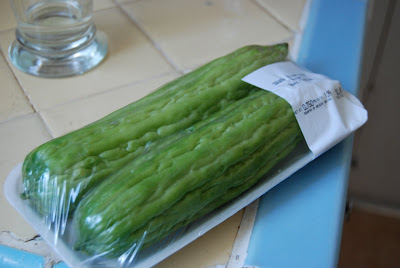
Don't knock it till you try it. That's all I'm saying.
Beef Tendon is full of collagen. If you are a woman, you might know that collagen is very good for your skin. It is included in beauty creams, and in Asia some women take collagen pills because they think it makes them look younger. I can't vouch for any such claims, but I can say that beef tendon soup is delicious--health benefits or not.
I found the beef tendon at Nijiya, on sale for about $3. I didn't know what to do with it at the time, but it looked so intriguing that I had to buy it. I then looked online and found a bunch of soup recipes. Beef tendon needs to be cooked for at least 3-4 hours. This makes it tender and jelly-like... Kind of like the consistency of pigs snout (trompa). After that long cooking time, it releases its collagen into the broth. When you refrigerate the leftover soup, the broth turns to gelatin, which shows that the collagen is in there.
Ingredients
Lotus root, peeled and sliced
2 purple okinawan sweet potatoes
1 peeled carrot, chopped
1 large wood ear mushroom, sliced into thin strips
1 leek, chopped
1 garlic clove
1 star anise
1 lemon, already juiced, just the rind
salt to taste
1 package of beef tendon (about 3/4 pound)
1 handful of goji berries
1 handful sliced almonds
4 inch piece of daikon, sliced
Add water to cover and simmer for 3-4 hours.
The purple of the sweet potatoes leached out into the soup, creating a purple soup! The flavor was earthy yet refreshing. I served it with a little dish of soy sauce to dip the tendon in. It was soooo good! I can't wait to make my next batch.
Wood Ear Mushroom







































